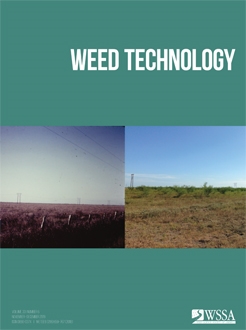Six on-farm studies determined the effects of a rolled rye cover crop, herbicide program, and planting technique on cotton stand, weed control, and cotton yield in Georgia. Treatments included: (1) rye drilled broadcast with 19-cm row spacing and a broadcast-herbicide program (2) rye drilled with a 25-cm rye-free zone in the cotton row and a broadcast-herbicide program (3) rye drilled with a 25-cm rye-free zone in the cotton row with PPI and PRE herbicides banded in the cotton planting row, and (4) no cover crop (i.e., weedy cover) with broadcast herbicides. At two locations, cotton stand was lowest with rye drilled broadcast; at these sites the rye-free zone maximized stand equal to the no-cover system. At a third location, cover crop systems resulted in greater stand, due to enhanced soil moisture preservation compared with the no-cover system. Treatments did not influence cotton stand at the other three locations and did not differ in the control of weeds other than Palmer amaranth at any location. Treatments controlled Palmer amaranth equally at three locations; however, differences were observed at the three locations having the greatest glyphosate-resistant plant densities. For these locations, when broadcasting herbicides, Palmer amaranth populations were reduced 82% to 86% in the broadcast rye and rye-free zone systems compared with the no-cover system at harvest. The system with banded herbicides was nearly 21 times less effective than the similar system broadcasting herbicides. At these locations, yields in the rye broadcast and rye-free zone systems with broadcast herbicides were increased 9% to 16% compared with systems with no cover or a rye-free zone with PPI and PRE herbicides banded. A rolled rye cover crop can lessen weed emergence and selection pressure while improving weed control and cotton yield, but herbicides should be broadcast in fields heavily infested with glyphosate-resistant Palmer amaranth.
Nomenclature: cereal rye; Secale cereale L.; Palmer amaranth; Amaranthus palmeri S. Watson AMAPA; cotton; Gossypium hirsutum L.






